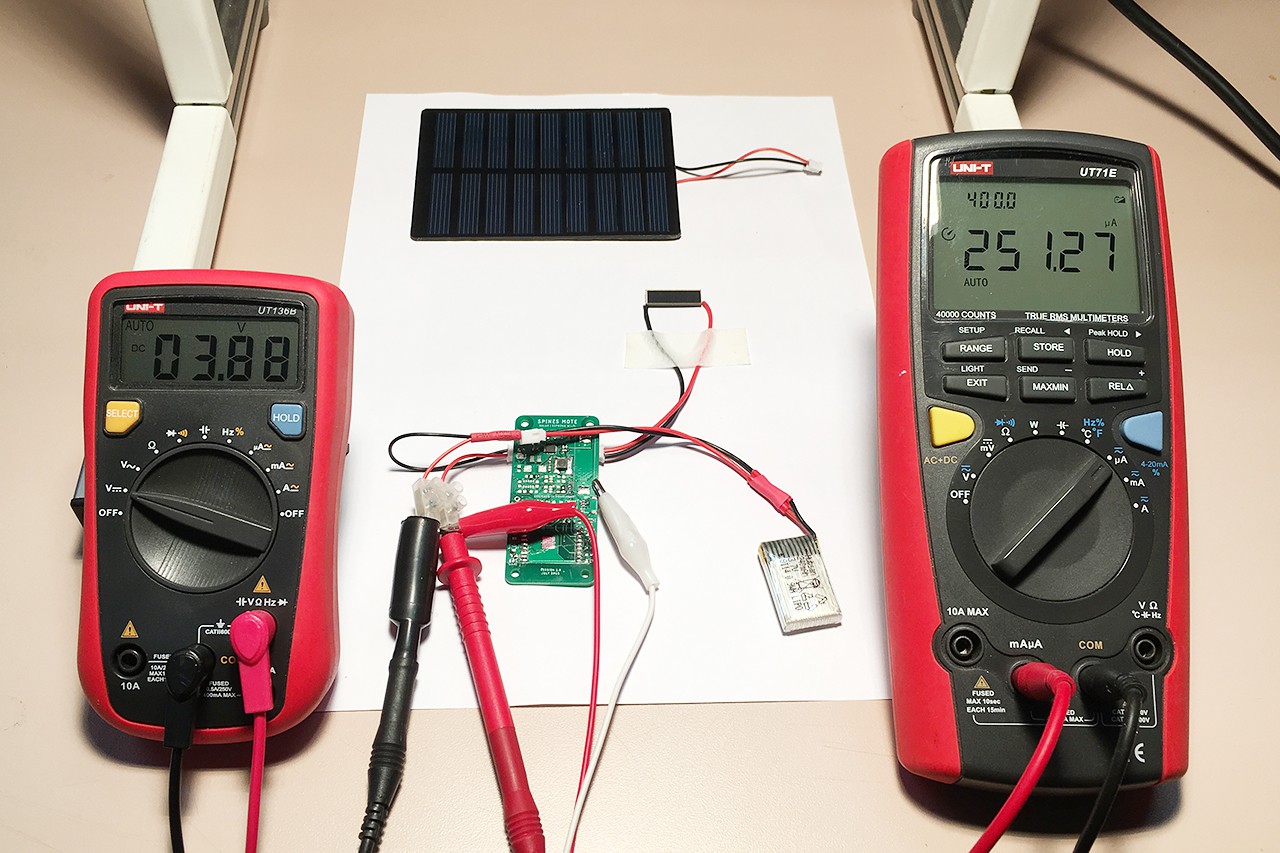Things get much smoother after fixing the ESP8266 I2C issue. While the RV-1805-C3 RTC module is interfering the ESP8266 and hence omitted for now (more details on this later), the rest of the PCB seems to be working fine: The environmental sensors are now fully functional, the LTC2942-1 battery fuel gauge is working (though this might be dropped ultimately due to its high current consumption, more testing needed), and most importantly, the energy harvesting circuit is somewhat charging the battery or supercapacitor.
Generally speaking, there are two things that you need to understand in order to build a self-sustaining, energy-harvesting system:
- Expense: How much energy does the system consume?
- Income: How much energy can the system harvest and make available for use?
Answering the first question is fairly straightforward: You can simply plug a current meter to profile how much power it is consuming at each stage (deep sleep, sensor polling, transmitting, etc.), and derive an upper bound for this.
On the other hand, determining (or predicting) energy availability is difficult, especially for uncontrollable (though somewhat predictable) energy sources like solar. The software part of this project is meant to address this problem, but that will be a long story to tell in some future posts. For the time being, I will need to characterize the hardware capabilities with different types of solar cells that I have:
- IXYS KXOB22-01X8F (This is the one that can be placed on the PCB. I do not really expect it to be useful for the ESP8266-based SPINES Mote, but I thought that it would be interesting to evaluate what it can do for some future lower-power SPINES variants.)
- Seeed Technology 0.5 W Solar Panel
- Some ultra cheap solar panels "rated" at 1 W (as shown in the picture below)
I have just set up a halogen lamp test stand to establish the best-case scenario. This measures the charging current (with the multimeter on the right; the left one is probing the battery voltage) to a 240 mAh LiPo battery via the BQ25570 power management IC.

With the halogen lamp turned on (measured at 300 lux with an iPhone app), the KXOB22-01X8F can deliver around 250 µA to the battery, while the 1 W solar panel can achieve up to 8 mA.
I am going to test how well (or bad) the charging goes for these solar cells in more realistic outdoor and indoor (thanks for the mention in the Hackaday newsletter!) scenarios in the next few days. Hope the weather will turn better for outdoor tests. Stay tuned.
Discussions
Become a Hackaday.io Member
Create an account to leave a comment. Already have an account? Log In.